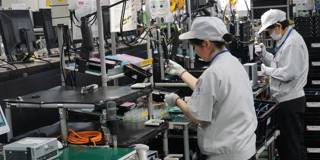In the 1980s, Japan boasted a dynamic consumer-electronics sector that served as a cornerstone of its robust export industry. But soon, new digital technologies began to replace the analogue devices on which Japan had a near-monopoly – and both producers and the government failed to adapt.
MILAN – Japan should be doing well. It boasts a well-educated and disciplined workforce, and outdoes most other industrialized countries on both investment and spending on research and development. In fact, at 3.3% of GDP, Japanese R&D expenditure was higher even than that of the United States until recently. And yet, Japan’s relative decline continues.

MILAN – Japan should be doing well. It boasts a well-educated and disciplined workforce, and outdoes most other industrialized countries on both investment and spending on research and development. In fact, at 3.3% of GDP, Japanese R&D expenditure was higher even than that of the United States until recently. And yet, Japan’s relative decline continues.